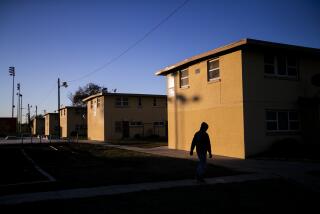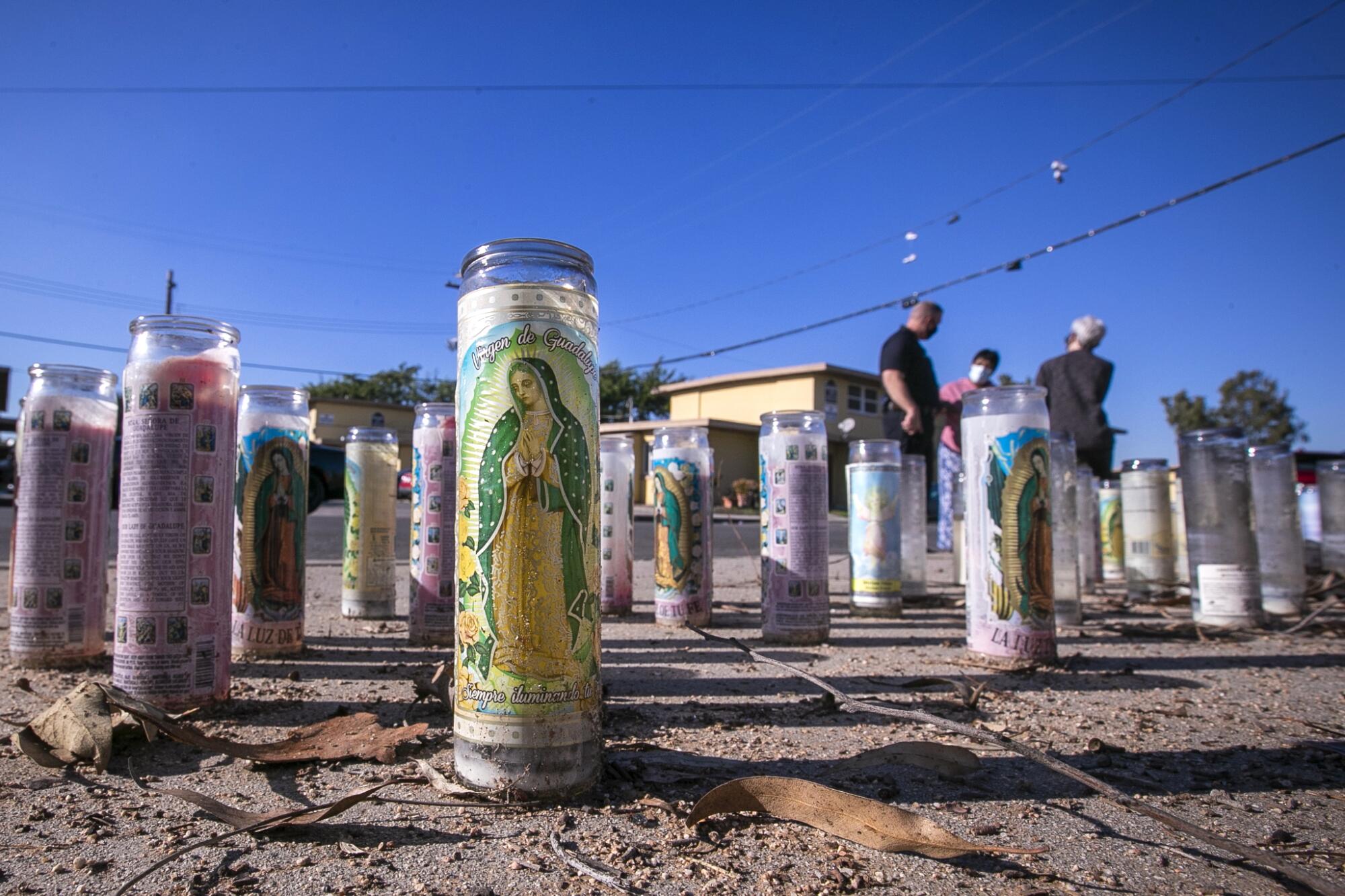
- Share via
Seven men and one woman were shot to death in Nickerson Gardens in 2021, and Chica Caldwell knew them all.
Rodney Laird, she said, “was an awesome dad,” “a hands-on father.” And Timonhy Raynea Lee? “She was a real good young lady,” Caldwell said. “Just came and was hanging out on her normal day and tragedy hit.”
Nickerson Gardens is the largest public housing project west of the Mississippi River, and Caldwell is president of its resident advisory council. She has lived here for 14 years, raised four children and three foster children here.
She would not live anywhere else.
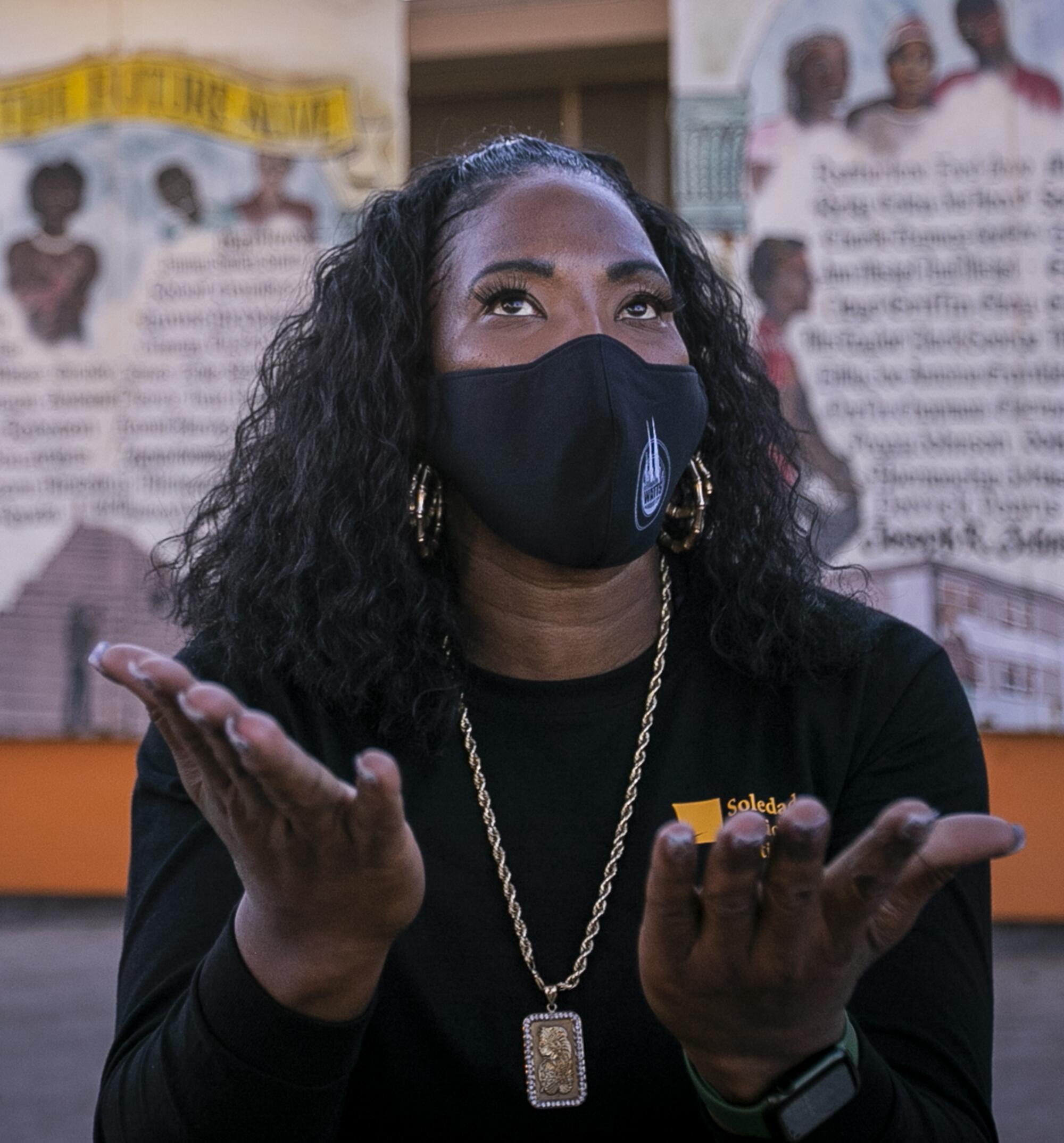
“When I walk in Nickerson Gardens, I feel safe, because I empty my trash at 11 p.m. and nobody bothers me at all,” the 45-year-old said, as she took a quick break from working a Christmas party for the complex’s elderly residents. “My kids, they play in the backyard. … Nobody’s scared, even though crime might be up.”
Homicide is definitely up. In Nickerson Gardens, where more people were shot to death in 2021 than in the previous three years put together. In Watts, where the low-slung yellow development takes up 55 dusty acres. In Los Angeles County. And in the U.S. as a whole.
Data from the Los Angeles County coroner’s office compiled by The Times tally 22 homicides in Watts from January through November, nearly double the number for the same period a year earlier. That’s more than a fivefold increase from 2018, when just four homicides occurred in the neighborhood.
Since the pandemic began, crime has become a polarizing issue, an angry stew of race, class and socioeconomics. In this South L.A. enclave, the jump in deadly violence is more painful and complicated than the headlines and political bombast that followed a string of smash-and-grab robberies in high-end boutiques.
Caldwell is adamant: “People have to understand that Watts is not equal to crime.”
Marcenus Earl is a little sheepish: “Some of the community has grown desensitized to this,” said the 51-year-old, who recently left Watts for Dallas and was back visiting his grandkids for Christmas. “You’ll get a message about a shooting, say, ‘damn,’ and feel a little bit of shame before moving on with your day.”
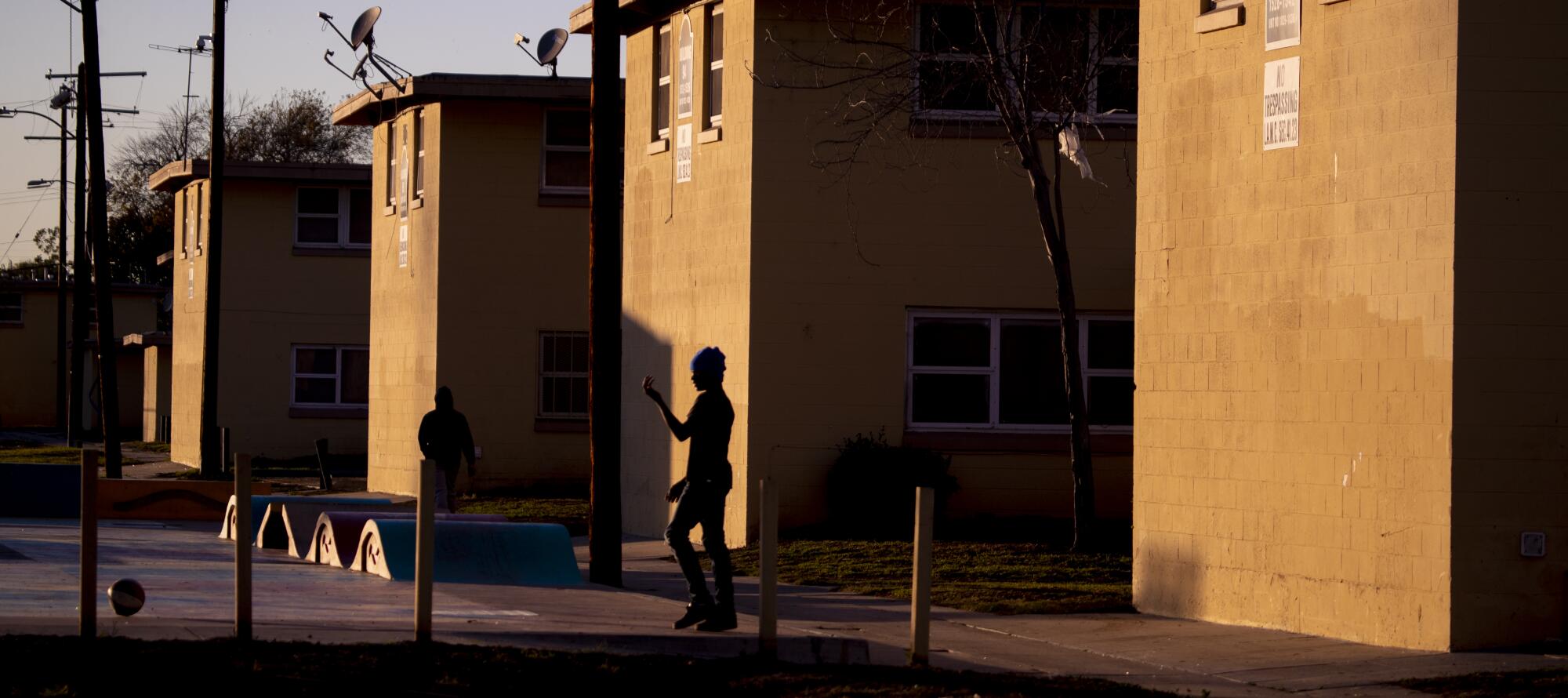
Quirina Ramirez, who moved to Watts from downtown Los Angeles two years ago, is torn: “It’s not as bad as I thought it was in Watts, but there is a lot to do to make it safer.”
And Desiree Edwards is frightened: “You get the alerts across social media of the crime going on right in your neighborhood, right by you,” said the 56-year-old, who owns the only sit-down restaurant in Watts. “And it’s horrendous.”
At a scant 2.1 square miles, Watts packs in an outsized share of history and population. The neighborhood may be best known as the ignition point for the 1965 Watts Riots — not the first racial uprising of the civil rights era, but the most explosive, as Black residents rebelled over bad treatment by a white police force and the erosion of jobs and services.
Nearly 42,000 people live here today, making it more than twice as dense as the city of Los Angeles. In the 1940s, the neighborhood was predominantly Black. By the mid-1990s, Latinos were a slight majority. Now, Watts is 70% Latino and 27% Black, according to census data and Times analysis.
But the 22 men and women who were killed in Watts in the first 11 months of 2021 belie the neighborhood’s demographic makeup. Sixty-four percent of the homicide victims are Black; the remaining 36% are Latino. All were shot to death, except for one man who died of stab wounds.
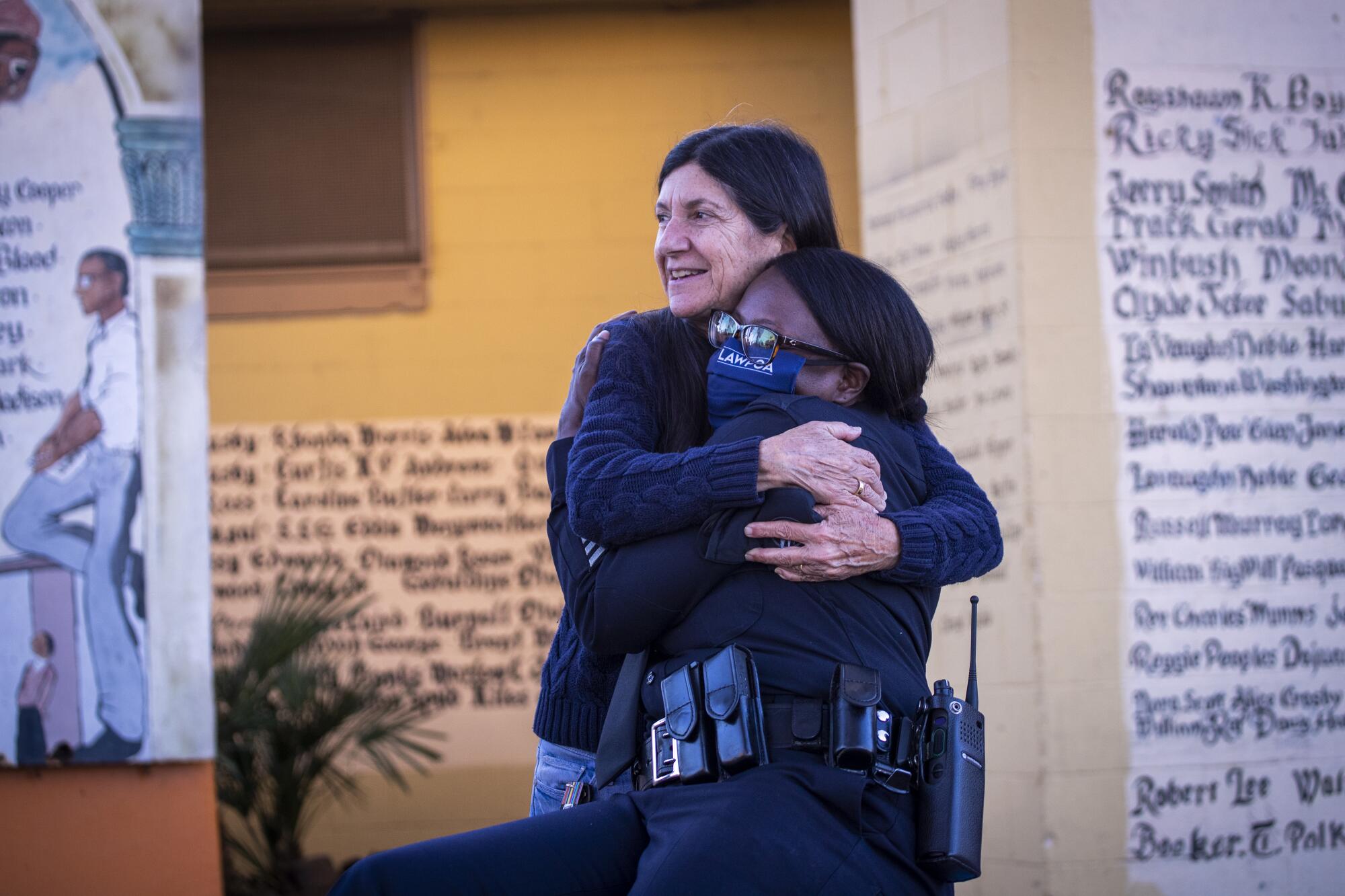
“Young Black men and families are the hardest hit by the pandemic,” said Jorja Leap, a professor at the UCLA Luskin School of Public Affairs and co-founder of the Watts Leadership Institute. “If you’re starving and you feel out of control, you’re more likely to be the victim or the perpetrator of violence.”
As of Dec. 30, 9390 people in Watts have been diagnosed with the virus, a case rate nearly 30% higher than the overall rate for Los Angeles; 117 have died.
Leap has worked in Watts for 43 years. As a researcher who helped analyze police innovation here, determining that the LAPD’s Community Safety Partnership program helped reduce crime and save some lives. As an admirer of residents’ resilience and creativity. And as a critic of the slow pace of change and lack of economic investment.
“We have plenty of investment in social programs in Watts,” Leap said. “Where is the economic structure to give people jobs?”
Edwards has operated Watts Coffee House here since 1997, ladling up grits, smothering potatoes, sprinkling French toast with powdered sugar. Training young people and recovering addicts to work in a professional kitchen. Hiring local residents. Ruing the rise in homicide and the lack of outrage.
She has owned a house in nearby Gramercy Park for the last seven years. One recent morning, as she drove home from the restaurant before heading to a catering job, she saw a man standing on the east side of Normandie Avenue with his arm extended.
“He was shooting,” she recounted on a recent Sunday morning, her eyes wide with remembered fear. “So I stop in the middle of the street. … I’m trying to put the truck in reverse. I couldn’t even get it. I sat there and prayed.”
When she finally got home safely, she said, she stayed there for the next three days.
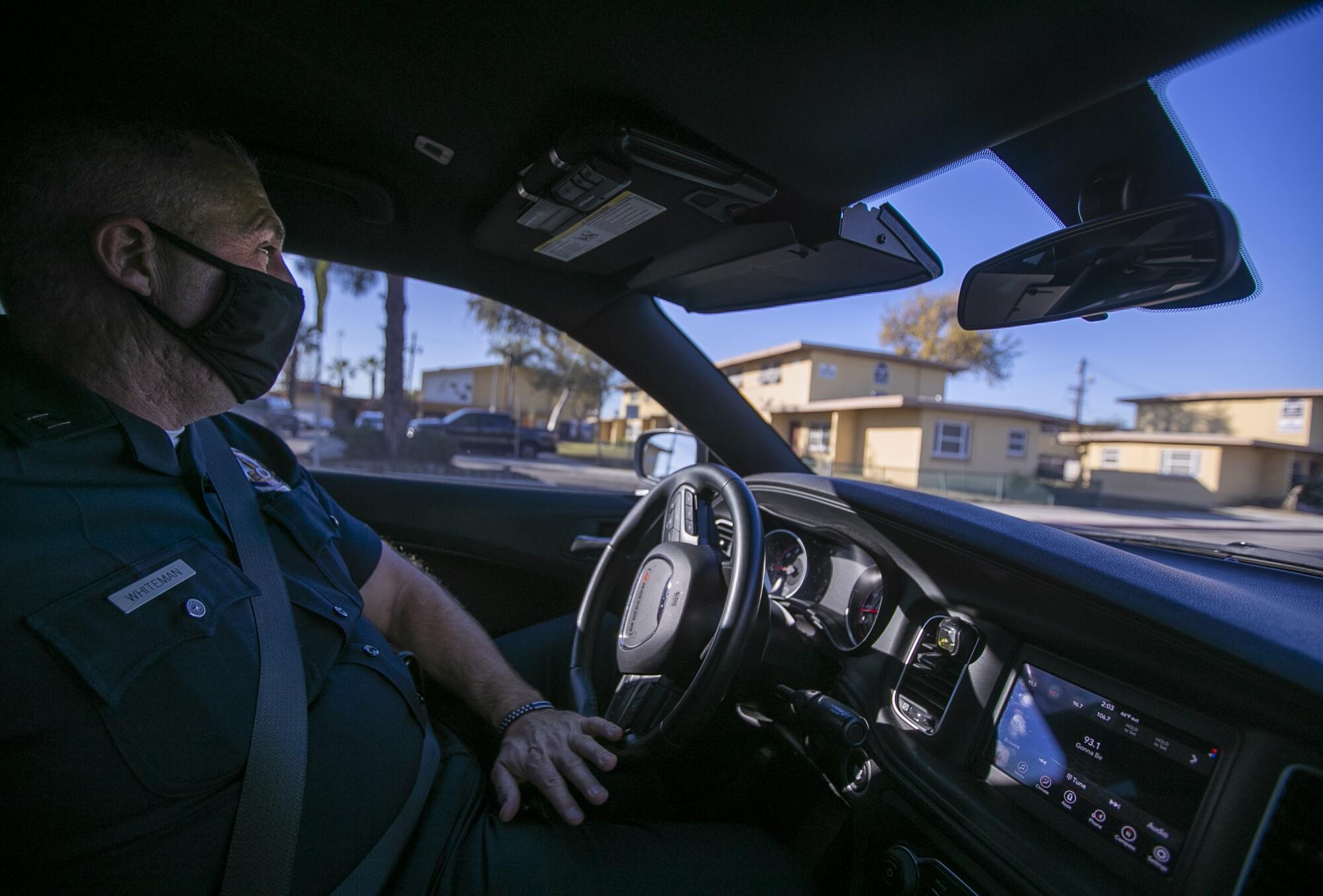
Capt. Ryan Whiteman, with the LAPD’s Community Safety Partnership Bureau, said a lot of variables over the last 18 months may have gone into the rise in homicides, and many are out of people’s control.
“Does this COVID have to do with this? Does the shifting methodologies and practices of modern-day policing have anything to do with it?” he asked. “We don’t know. … Hopefully we have a safer 2022.”
The sidewalk before Whiteman was filled with burned-out votive candles on this sunny December Friday, each one a memory, a prayer, a small sign of respect. This is where 24-year-old Timonhy Raynea Lee was gunned down just weeks earlier, the eighth homicide victim in Nickerson Gardens.
Lee had previously lived here but moved away with her family. She was back visiting on Nov. 22, talking with friends on Parmelee Avenue at a small dirt field surrounded by short concrete pillars and muted yellow apartment buildings.
“The suspects drove by, shots were fired, and unfortunately this young lady was struck,” Whiteman said. “And she succumbed to her wounds right here in the street.”
Beatrice Anderson-Clemons walked up and handed Whiteman a flier about a Christmas toy drive that was fast approaching. She used to live across the street from Lee before both families moved away. She described the dead woman’s father as humble.
“You have a lot of people here, they love on each other, they hate on each other, they do what people do,” said Anderson-Clemons, who raised six children in the housing project she used to call home. “But it’s a good community. … We just have some knuckleheads that make it bad for others.”
Whiteman said arrests have been made in half of the homicides in Nickerson Gardens. Six of the eight, he said, were gang-related, and four of those were the result of internal disputes within the Bounty Hunter Bloods.
“That is a very unique wrinkle to it,” he said. “It’s not a traditional back-and-forth gang feud where we have historical feuds that sometimes spawn into a weeklong shooting spree back and forth between neighborhoods. These situations, which are internal, are much more unpredictable. It’s a little bit harder to fully deploy resources to interdict [this] violence.”
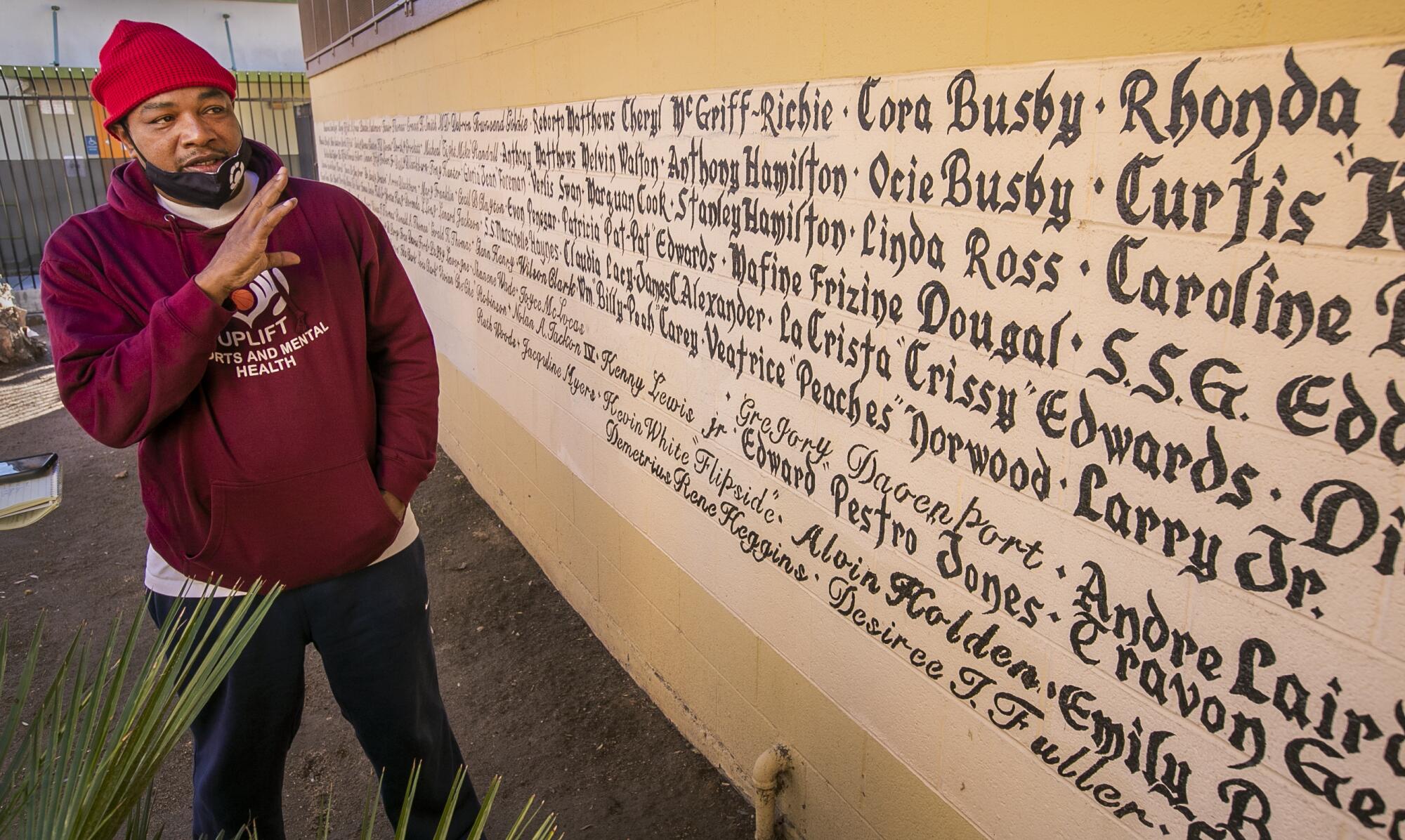
But though homicides have been on the rise in Watts, other violent crimes have dropped in the last year. Rape, robbery and aggravated assaults have all fallen, said Deputy Chief Emada Tingirides, along with burglary and burglary theft from vehicles.
“When everyone says crime is increasing across the city, my response has been, ‘We continue to decrease crime in Watts proper this year,’” she said. “And when we had the eight homicides in Nickerson Gardens, what was so compelling now, as opposed to 10 years ago, was the lack of anger ... and [people] wanting to look at the root cause of why it happened.”
Just a mile or so from Nickerson Gardens, the Jordan Downs housing development shows signs of revitalization.
The project’s historic buildings were erected in 1944 as temporary housing for families in World War II. Today, rusted metal bars cover the doors and windows, and wooden roofs and awnings show wear and rot.
But nestled within the sprawling development is a $1-billion housing project, modern townhouse apartments with Spanish tile roofs, The buildings have names such as Cedar Grove and New Harvest, instead of generic Jordan Downs Building 1 and Building 2.
And unlike Nickerson Gardens, there’s been only one homicide committed here in 2021. Julio Cesar Centeno, 32, was shot to death on Aug. 8 near the corner of South Grape Street and East 97th.
“Things have changed a lot for the better,” said Phyllis Brown, a former Jordan Downs block captain. “There are not robberies like there used to be, not shooting people; things are getting better with the police too.”
Brown has spent all of her 61 years in Watts. In 2020, she moved from an older Jordan Downs apartment into New Harvest. She is thankful for the in-unit washer and dryer and functioning heating system.
What she values most, however, is her security.
“I have peace of mind,” she said on a recent Saturday, “and my family is safe.”
Earlier that day, about 500 families took part in a holiday toy giveaway at the Jordan Downs Center, hosted by former Grape Street Watts Crips member Bow Wow.
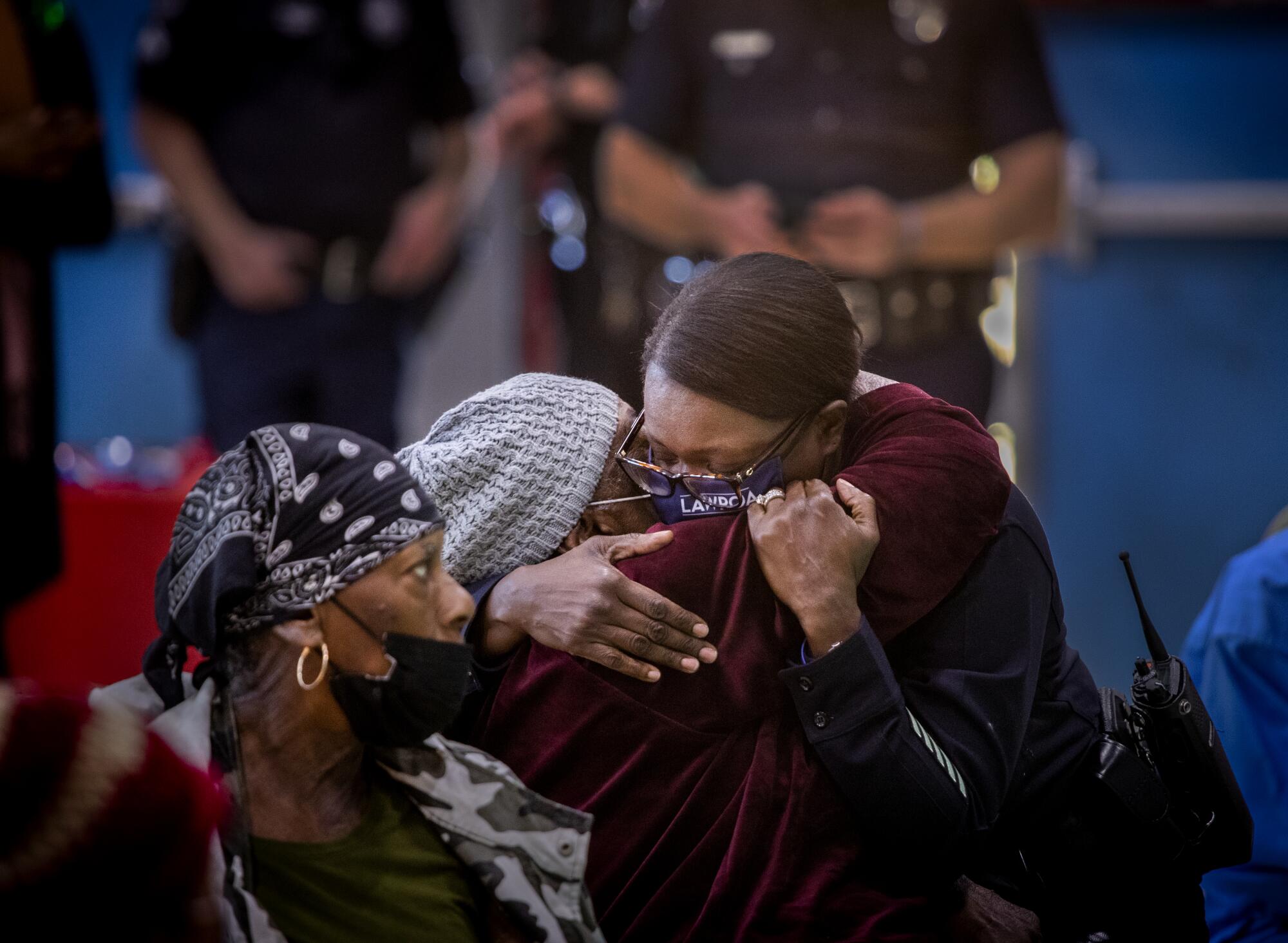
Parents and children lined up for scooters, skateboards, bicycles, toys and board games.
Alejandra Lopez reached the giveaway 15 minutes before it ended. All that remained for her two boys were board games: Chutes and Ladders, chess. She was glad to have them.
“All you want is your children to have a toy or a present for Christmas,” Lopez said.
The 28-year-old moved from Inglewood to Jordan Downs two years ago against the advice of an older brother, who described Watts as “full of crime.”
“Sometimes you can hear the gunfire,” she said, “but I’ve never felt scared for my children.”
Times staff writers Melissa Hernandez, Maloy Moore and Iris Lee contributed to this report.
More to Read
Sign up for Essential California
The most important California stories and recommendations in your inbox every morning.
You may occasionally receive promotional content from the Los Angeles Times.

